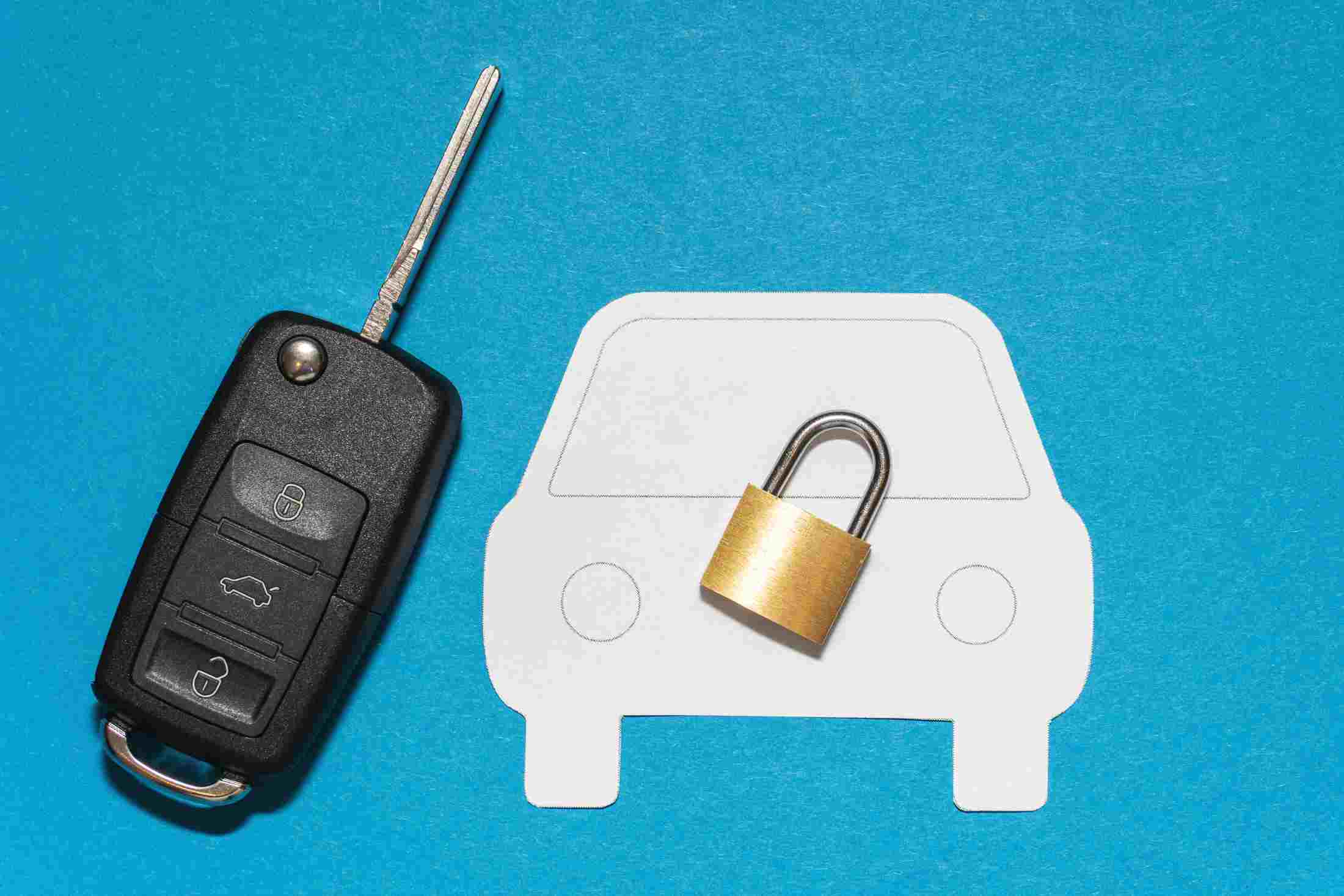Car Insurance Online, Up to 90% Off
9000+
Cashless Garages
96% Claim
Settlement Ratio
1.2 Cr+
Policies Sold
I agree to the Terms & Conditions
Buy Online for Huge Savings

Car insurance Online, Up to 90% Discount
It's a Brand New Car
9000+
Cashless Garages
96% Claim
Settlement Ratio
1.2 Cr+
Policies Sold
How Anti-Theft Devices for Cars Help in Insurance Savings?

Car theft has become a constant concern, requiring even more attention toward vehicle security. In pursuit of vehicle safety, car owners have continued installing anti-theft devices to help discourage theft. But do you know that using an anti-theft device for a car in India can also help lower your insurance costs?
Insurance companies offer an anti-theft device discount in car insurance if your car has an approved security system. This reduces your car insurance premium. In this guide, we'll explain what is an anti-theft device in car insurance and how it works. Read on to learn how to make your car safer and your insurance more affordable.

Table of Contents

What is an Anti-Theft Device for Cars?
An anti-theft device is a specialised electronic security system that prevents unauthorised vehicle access. Such devices may deter thieves through challenging access to or operation of the asset. They provide additional security by adding protective layers to avert theft or unauthorised use.
Hence, theft prevention through technology is meant to protect assets using preventive measures. This includes restricting access and rendering crucial functions inoperative. It also informs the owner of a suspicious incident. Total theft prevention cannot be assured, but the level of risk is lower, and security is higher.
How Anti-Theft Devices for Cars Work?
An anti-theft device is a combination of deterrence, detection, and defence. It works to avoid illegal intrusion into vehicles. Anti-theft devices use high-tech solutions to make stealing difficult, alerting owners and perhaps even rendering the stolen item inoperable. Their functioning includes:
1. Deterrence
The anti-theft devices aim to discourage thieves from carrying out the acts. Apparent deterrents include steering wheel locks, security stickers, and alarms. Such visible security devices indicate the item is vigilantly guarded, discouraging theft.
2. Detection
Moreover, advanced devices may contain motion detection, glass break detection systems, and GPS tracking. They detect entry, movement, or unauthorised access, notifying the user via an alert or an alarm.
3. Response Mechanisms
After sensing a threat, the device will respond with an attempt to transmit an alarm about the attempted theft. Some employ a loud, alarming sound or a siren to cause an alert in the nearby environment. In some devices, the engine's ignition function is disabled.
4. Smart Technology Integration
Modern anti-theft solutions integrate with user smartphones, allowing them to track, control, and sometimes turn off objects remotely. Geofencing, biometric authentication, and artificial intelligence-powered monitoring further add to security.
Impact of Anti-theft Devices on Car Insurance Premiums
Your anti-theft device can mean savings on your car insurance policy. Insurance with anti-theft devices generally has a lower premium. This is because they decrease the chances of theft, which decreases the number of theft claims presented. An automobile is less of a liability for an insurer, reducing the amount the policy costs.
To avail of the anti-theft device discount in car insurance, the Insurance Regulatory and Development Authority of India (IRDAI) must approve the device. Commonly accepted devices include GPS trackers, immobilisers, car alarms, and steering locks. When purchasing or renewing your policy, inform your insurer about the installed device to get the discount.
Before installing any security device, confirm discount eligibility with your insurance provider. Proper documentation, including the installation certificate, is often required to apply the discount to your car insurance premium.
How Much is the Anti-Theft Discount on Car Insurance?
Car insurance companies tend to give discounts on premium payments for theft-proof vehicles. The discount is an average of 2.5% for the premium, with only a maximum value of Rs. 500.
Anti-theft device installation does not influence third-party liability insurance after the car is sold. Thus, although the discount does help in lowering the total premium, it does not apply to third-party coverage.
Check with your insurer about approved devices and the application process to get these discounts. Protect your car and enjoy lower premiums with anti-theft device discounts.
How to Install Anti-Theft Devices in Cars?
Setting up the anti-theft devices gives another layer of security to the vehicle. It also leads to a reduction in car insurance rates. Follow these simple steps to set up your device correctly:
Step 1: Choose the Right Anti-Theft Device
Decide on the type of device based on your needs and budget. Choose from a steering wheel lock, a GPS tracker, a car alarm, and an immobiliser. Check if your insurance provider offers discounts for specific devices.
Step 2: Read the Installation Instructions
Go through the device installation guide provided. Understand the setup process and safety precautions before starting. Choose a secure area inside the car for electronic devices like GPS trackers. They should be positioned for easy access but tricky removal.
Step 3: Install and Test the Device
Attach the device as per the instructions for mechanical devices like locks. Connect the wiring correctly to the battery or fuse box in electronic devices. Test the device to make sure that it works. If it does not work correctly, check the connections and positioning.
Step 4: Sync with Mobile Apps (If Applicable)
For smart anti-theft devices, download the companion app on your phone. Register the device and enable notifications for real-time tracking and alerts. Test remote features like engine shutdown or location tracking.
Step 5: Verify with Your Insurance Provider
If your insurance companies provide special discounts for installing anti-theft devices, report them after installing them. Provide proof, such as a copy of purchase receipts or a certification from a professional installer.
Step 6: Regular Maintenance & Inspection
Periodically check the device to ensure it remains functional. Change batteries in key fobs or GPS units if needed. If the device malfunctions, repair or replace it immediately to maintain security.
Benefits of Installing Anti-Theft Devices in Your Car
Installing anti-theft devices fortifies vehicle security and provides financial and practical advantages. Here are the benefits of installing it:
Hinder Thieves on Attempt
Alarms and immobilisers blaring bright signals can deter prospective thieves. This is because of the attention being drawn to them. An unexpected beep from the siren may scare them away.
Recover Stolen Vehicles
GPS trackers locate stolen vehicles, raising their confidence to rapid recovery. High-tech tracking systems monitor and help with the speedy recovery of the vehicle.
Insurance Premium Discounts
Insurance companies offer good premium discounts to vehicle owners with proper anti-theft devices installed. The presence of these systems significantly reduces the theft risk.
Makes Claim Easy
Installing security systems will prove that you have taken reasonable measures against theft. Thus, it helps make any eventual compensation claims less complex and strengthens your case.
Avoid Inconvenience
Prevention of theft helps you evade the inconveniences of police reports, insurance claims, and replacing that lost vehicle. Money spent on barring theft returns to your peace of mind and long-term benefit.
What Type of Anti-Theft Devices Do You Need?
When selecting anti-theft devices, one should consider effectiveness, compatibility, and integration with other security systems. Below are several types of anti-theft devices:
How to Choose the Right Anti-Theft Device for Your Car?
There are many factors to consider while selecting an anti-theft device. Here are several key tips that will help you choose the right device for your car's safety:
Type of Security Needed
Identify if you need a device for theft prevention (steering locks), theft detection (alarms), or recovery (GPS trackers). Choosing based on your security concerns ensures better protection.
Compatibility with Your Car
Not all devices work with every car model. Ensure the device integrates well with your vehicle's security features, such as keyless entry, immobilisers, or central locking systems.
Ease of Use and Installation
A security device should be simple to operate and install. Complicated setups may discourage regular use, reducing the effectiveness of your car's protection against theft.
Cost and Budget
Anti-theft devices come at different price points. While high-end devices offer more security, you should choose one that fits your budget without compromising effectiveness.
Brand Reputation and Customer Reviews
Buying from a trusted brand with positive customer feedback, reviews, and ratings ensures a reliable purchase.
Maintenance Tips For the Anti-Theft Devices
Keeping your anti-theft device in good condition ensures it works effectively and provides maximum security for your car. Regular maintenance can also help you avoid malfunctions and costly repairs. Follow these simple tips to keep your device in good condition:
Check Battery Life Regularly
Ensure electronic anti-theft devices, such as GPS trackers and alarms, have sufficient battery life. Replace or recharge batteries as needed to prevent unexpected failures at the time they are required.
Inspect Wiring and Connections
Check for loose or damaged wires for wired devices like immobilisers and alarms. Faulty connections can cause malfunctions, making your car vulnerable to theft. Incorrect wiring can also affect your driving.
Test the Device Monthly
Activate your anti-theft system at least once a month to verify it's functioning correctly. Ensure alarms sound, immobilisers block ignition, and tracking devices update location properly.
Keep the Device Clean
Dust and dirt can affect the performance of mechanical locks and electronic sensors. Clean the device with a dry cloth and avoid exposure to excessive moisture or extreme temperatures.
Update Software for Smart Devices
Regularly update the software if your anti-theft device has a mobile app or smart features. This ensures compatibility with security improvements and fixes any bugs or vulnerabilities.
Ensure Proper Locking & Activation
Double-check that steering locks, gear locks, and alarm systems are engaged before leaving your car. Many thefts occur due to users forgetting to activate their security devices.
Verify GPS and Alarm Notifications
If your device has a GPS tracker or alarm system, ensure alerts are enabled on your phone. Regularly test notifications for real-time tracking and security warnings.














